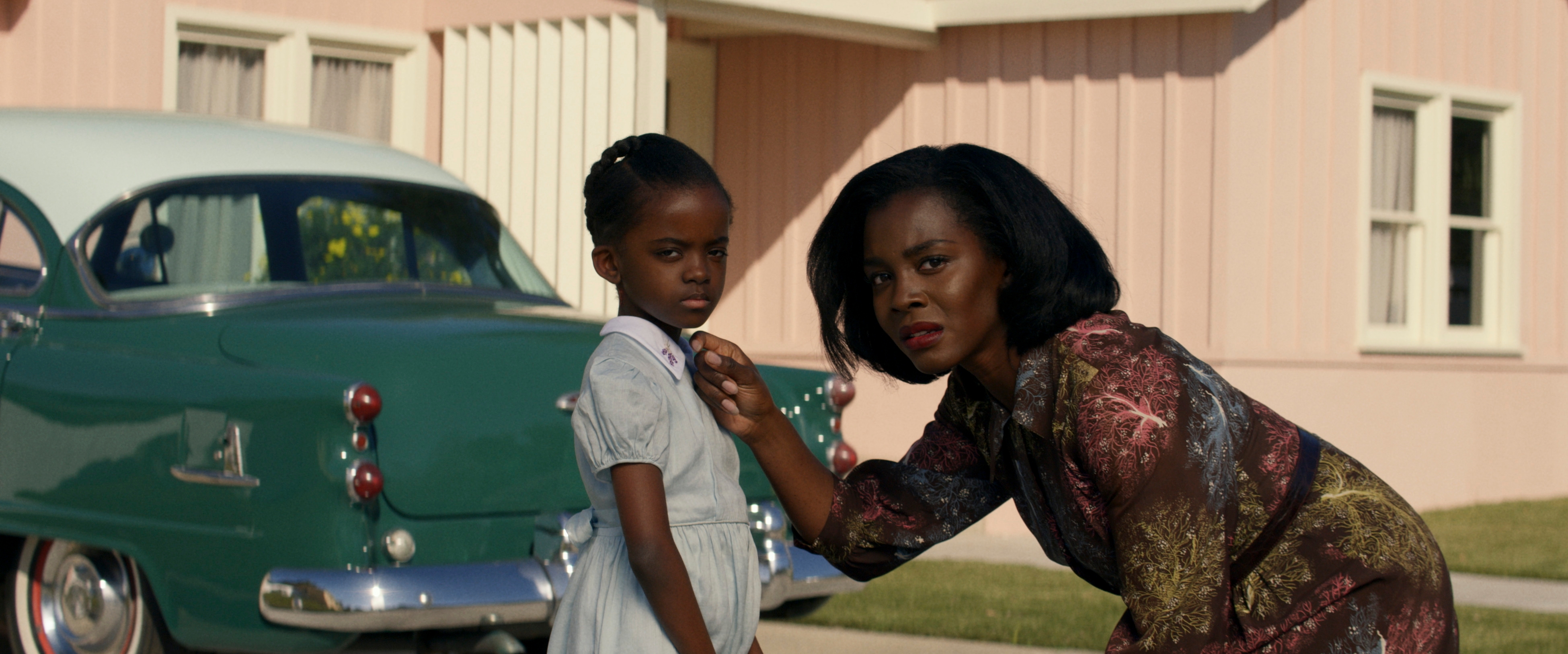The Black trauma at the heart of Little Marvin’s Them is relentless, but not gratuitous

The recent success of HBO’s Watchmen and Lovecraft Country speaks to the interest and urgency surrounding TV shows that recognize the horror elements in literary depictions of Black tragedy and trauma. There was horror in the minstrelsy of The Clansman, the Thomas Dixon Jr. novel that served as the basis for the 1915 film Birth Of A Nation. Pecola Breedlove’s narrative in Toni Morrison’s The Bluest Eye was a horror story. Terrorizing Black people for their Blackness is horrific. Like its predecessors, including Get Out, the anthology series Them understands that for years, white people were the boogeymen in Black folks’ closets and the sources of scary things that went bump in the night.
The importance of demonstrating the horror of redlining, integration, and the Great Migration is at the forefront of Little Marvin’s series Them. And it demonstrates it again and again for the Emorys, a Black family that relocates from North Carolina to an all-white Los Angeles neighborhood. Compton in 1953 looked nothing like the neighborhood many outside of it learned about through 1990s gangsta rap music or as the home of tennis sensations Venus and Serena Williams. Although currently gentrifying, nearly 70 years ago, when the fictional Emorys moved onto Palmer Drive as part of the millions of African Americans leaving the South during the Great Migration, they were Compton’s integrators.
The series is beautifully rendered on screen. Equal parts bootstrap narrative, discriminatory G.I. Bill, and racially restrictive covenants, Compton is white-picket-fence-Norman Rockwell picturesque (emphasis on the white). Until Henry (Ashley Thomas); Livia, a.k.a. “Lucky” (Deborah Ayorinde); and daughters Ruby (Shahadi Wright Joseph) and Gracie (Melody Hurd) arrive and inadvertently initiate a 10-day horror fest. Not only must the Emorys contend with the white terror of their neighbors, co-workers, and classmates; they’ve also moved into a literal haunted house.
Viewers might be tempted to draw comparisons to Jordan Peele’s Us, due to similarities in title, packaging, and marketing, or even Get Out for its theme of escaping white idyllicism predicated on Black suffering. Little Marvin’s series is indeed kin to them; however, it also appears to take inspiration from Stanley Kubrick’s The Shining, axe included. Remi Weekes’ His House offers an even closer and more recent parallel. The Shining, His House, and Them show that malevolent spirits can enter a broken heart and destroy from within, be it a person or a community. And everyone in Them, Black or white, already suffers from heartbreak when we are introduced to them. Many in the Great Migration searched for better opportunities and less discrimination, but found no better circumstances in their new homes. Henry, a veteran with PTSD, and his wife, Lucky, are part of the cohort that fled the white terror of the South. But their Compton neighbor Betty Wendell (Alison Pill) leads a violent campaign against the Emorys and asserts that “they came from someplace worse. They always do. So we have to make it worse for them here.” She proves herself correct on both counts.
The unrelenting violence of Them, particularly in the fifth episode, titled “Covenant,” is a reminder to pay close attention to the episodes’ trigger warnings. Trauma is cancerous, and racial trauma has metastasized from slavery, the nadir following Reconstruction, Jim Crow, lynchings, and redlining. Every atrocity that has been levied against Black people is laid upon the Emorys in scenes that linger excruciatingly. If discomfort is the point, the show overshoots it. If visceral pain for a viewership that may be desensitized to Black trauma on- and off-screen is the point, then Them succeeds in it.
The series also succeeds in its depiction of white flock, a kind of spectatorship of Blackness, that precedes white flight. White people who gather in crowds to peer at the curiosity of Blackness through windows. Through bars. It also accurately captures Black rage as a direct result of white violence. Them succeeds in its narrative of how malevolence can enter weakened hearts and minds. But it also begs the question: Why would a family escaping racial trauma willingly move to an all-white neighborhood?
Ruby, the eldest daughter at 14, who’s masterfully portrayed by Shahadi Wright Joseph (Us), must endure school-wide tauntings and a growing self-hatred. Young Gracie (Melody Hurd, in an outstanding performance) is at the age where children can still see what adults cannot. The Emorys are so determined to move forward from the recent past that they do not realize they have jumped out of the proverbial frying pan and into the fire.
Them is certainly a welcome addition to the Black horror cadre that doesn’t seek to sanitize what is truly terrifying to Black people: racists and the past traumas that can literally haunt. It gets painfully uncomfortable, particularly in the two “Covenant” episodes, but although “trauma porn” is often used to describe such renderings, there is nothing gratuitous or pornographic in its depictions of Black trauma. Perhaps in this regard, the exceptional performances of the cast are both blessing and curse. Early reactions to the trailer criticized the series as a Jordan Peele ripoff, but Them is clearly its own beast. Although it can be argued there’s a saturation of the genre within the comparatively small body of Black cinema that makes it to the screen, Them proves no one has a monopoly on the horror of Black trauma.